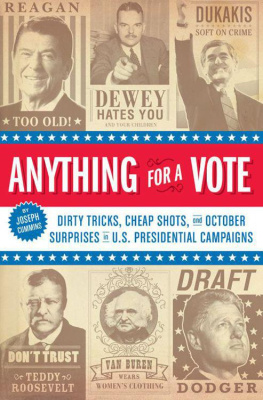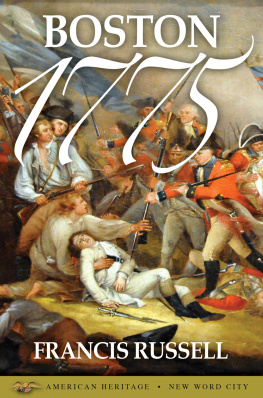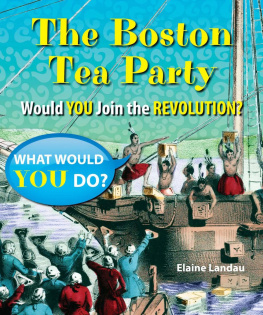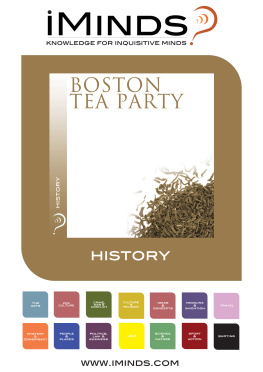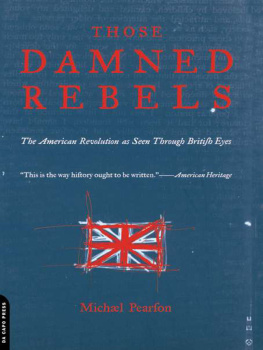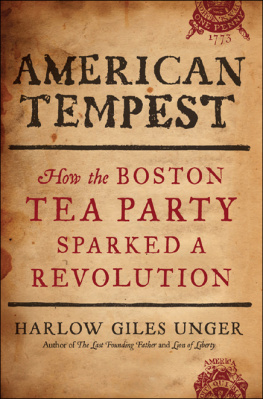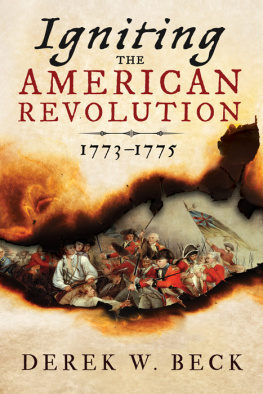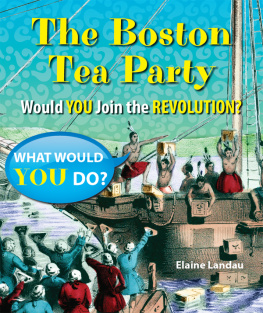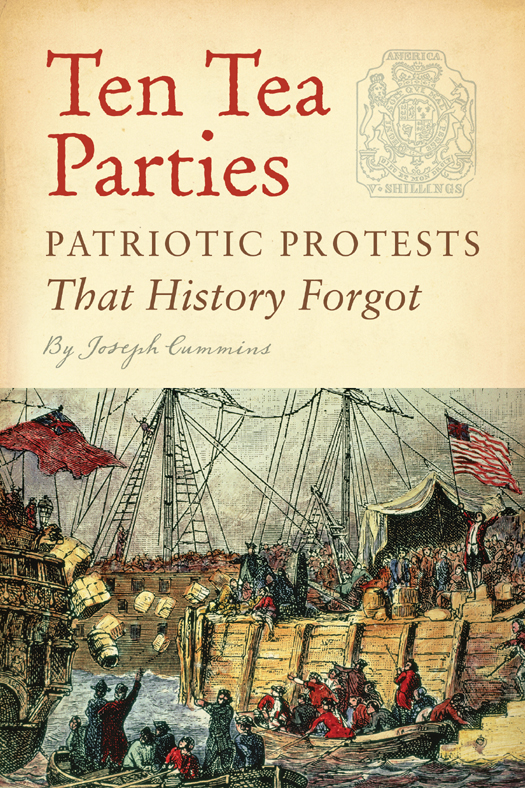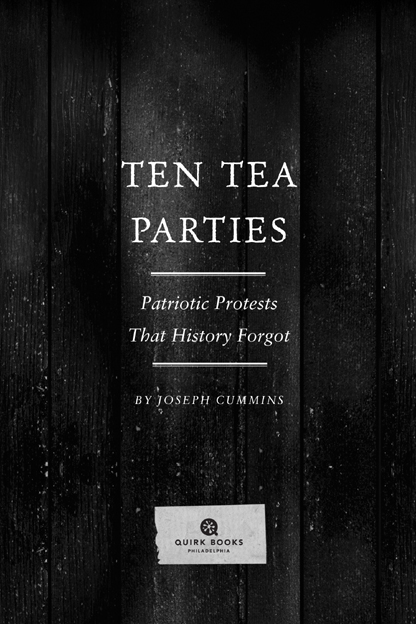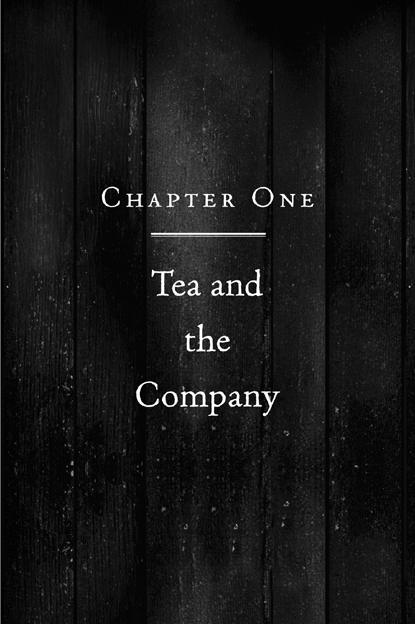Copyright 2012 by Joseph Cummins
All rights reserved. No part of this book may be reproduced in any form without written permission from the publisher.
Library of Congress Cataloging in Publication Number: 2011933426
eISBN: 978-1-59474-562-1
Typeset in Bembo and Old Claude
Designed by Doogie Horner
Production management by John J. McGurk
Cover and interior illustrations courtesy the Bridgeman Art Library On the cover: The Boston Tea Party, 16th December 1773. Engraving. Private collection/The Bridgeman Art Library.
Quirk Books
215 Church Street
Philadelphia, PA 19106
quirkbooks.com
v3.1



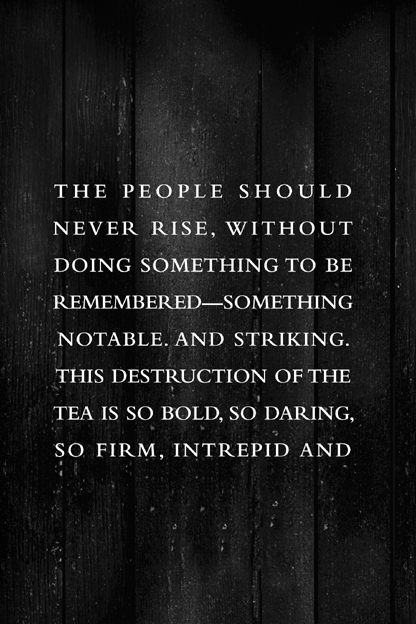

Introduction
What discontents, what dire events,
From trifling things proceed?
A little Tea, thrown in the Sea
Has thousands caused to bleed.
Anonymous New Hampshire poet
I t was more than just a little tea, of course. The tea that dozens of patriots dumped into Boston Harbor on the chilly evening of December 16, 1773, amounted to more than 92,000 pounds. Tall piles of the stuff floated like huge haystacks in the dim moonlight of the bay. And in the days that followed, many British observers wondered if the residents of Boston had gone insane.
After all, werent these the same colonists who consumed between 1,200,000 and 2,000,000 pounds of tea a year? One-third of Americas three million inhabitants drank tea twice a day. Yet now this hearty and warming stimulant was being tossed to the seagulls like so much wharf trash?
What happened after the Boston Tea Party was even more remarkable: Other colonists, men and women widely separated from Bostonians in culture and outlook, rallied behind their Massachusetts brethren. Up and down the eastern seaboard, from York, Maine, to Charleston, South Carolina, colonists dumped, burned, and boycotted tea. They threatened those who delivered its leavesbe they ships captains or humble peddlerswith everything from tarring and feathering to financial ruin. They scorned neighbors who drank tea and concocted an entirely fictitious sickness narrative around the beverage; they claimed tea stunted growth, turned men into pygmies, and transformed women into, as one patriot writer put it, God knows what. They claimed that tea was stomped into chests by Chinese men with dirty feet, that it was infested with bugs.
This book tells the largely forgotten stories of ten colonial-era tea partiesprotests in which tea was boycotted, destroyed, or worse. In these tales, Americans banded together to wage an economic war. And make no mistakedespite the tea partys more theatrical and carnivalesque trappings, this was war, with clear threats of violence directed at all those who dared to disagree with the patriots. When tea merchant Anthony Stewart was forced to set his ship Peggy Stewart ablaze in Annapolis, the mob deliberately engineered the conflagration to occur in front of the house where his wife, Peggy (the ships namesake), was giving birth to their child.
Tea parties were not pretty, but then neither was the revolution. Taken together, these ten examples form an untold narrative of American independence, a narrative that contains the DNA of future American protest movements. Over the course of the nations history, when times are tough and the chips are down, Americans have put aside their geographical and cultural differences to band together as a nation, as one. That had never happened before these early tea parties. In them, colonists overcame what historian T. H. Breen calls local jealousies and mutual ignorance, profound fear and clashing identities to find a common political visionwhat one tea-burning group of citizens called a general American union.
These ten tea parties are among the most important and influential milestones in Americas growth and developmentand its a shame that so many are largely forgotten. Whenever the nation faces a challengewhenever times require us to cooperate and serve togetherthe tea parties serve as an illuminating and inspiring example of all that Americans acting together can achieve.
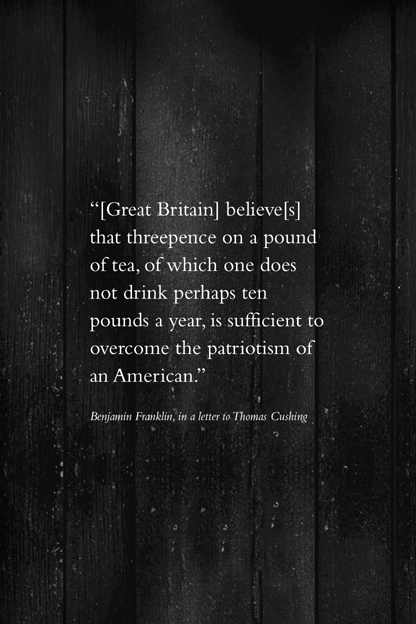
S ee if this story sounds familiar: During a severe financial recession, the government of the worlds most powerful country discovers that its largest corporationlets call it Corporation Xis rife with corruption, mired in debt, and facing financial collapse.
And although the corporations directors probably are guilty of criminal behavior, the government wont consider allowing the business to go down the tubes. Its simply too big to fail. Its finances are intertwined with those of the government and various national institutions much like veins and arteries grip a beating human heart.
If you think the only solution is a massive corporate bailout, youre rightonly the corporation in question is not Merrill Lynch circa 2008 but the East India Company in 1773. Its hard to overstate the incredible influence of the East India Company in the eighteenth century. Imagine a Microsoft or Google with governmental permission to mint money, acquire territory, maintain a standing army, enter into foreign wars, and make peace treaties, and youll have some idea of its might.
The company was founded more than 170 years before the American Revolution. As the 1500s came to a close, England had defeated the Spanish Armada and established itself as a sea power to be reckoned with, but it struggled to break into the burgeoning trade with the East, a lucrative business that had been cornered by the Dutch and Portuguese. This situation ended abruptly when a frustrated Queen Elizabeth I chartered, on the last day of 1600, a consortium of English merchants known as the Honorable East India Company (EIC), to which she granted a monopoly on all British trade east of the Cape of Good Hope. Thus emboldened, the EIC went on to become the worlds most powerful trading company, a position it held for the next 250 years.
Like any huge corporation, the East India Company had shareholders who expected hefty returns on their dividends, and for many decades the EIC did not disappoint. Its fleets of armed merchants carried gold, silver, silk, cotton, spices, and opium across the oceans. They elbowed the Portuguese and Dutch out of the way and took India by storm, setting up dozens of trading posts, making deals with local Mughal rulers who were willing to cooperate, and launching armed attacks against those who would not. By 1767, the EIC controlled much of the state of Bengal, in eastern India, essentially ruling a population of twenty million. Thousands of young eighteenth-century Britons journeyed to company outposts to make their fortunes. The opportunity offered equal amounts of risk and reward, as demonstrated by the so-called two-monsoon rule: if a Briton could survive two monsoons (or three years) without falling prey to one of Indias fatal illnesses, he was likely to escape the subcontinent alive and wealthy. Never mind that the Indian people supplying goods and labor to the EIC were plummeting ever deeper into poverty.



